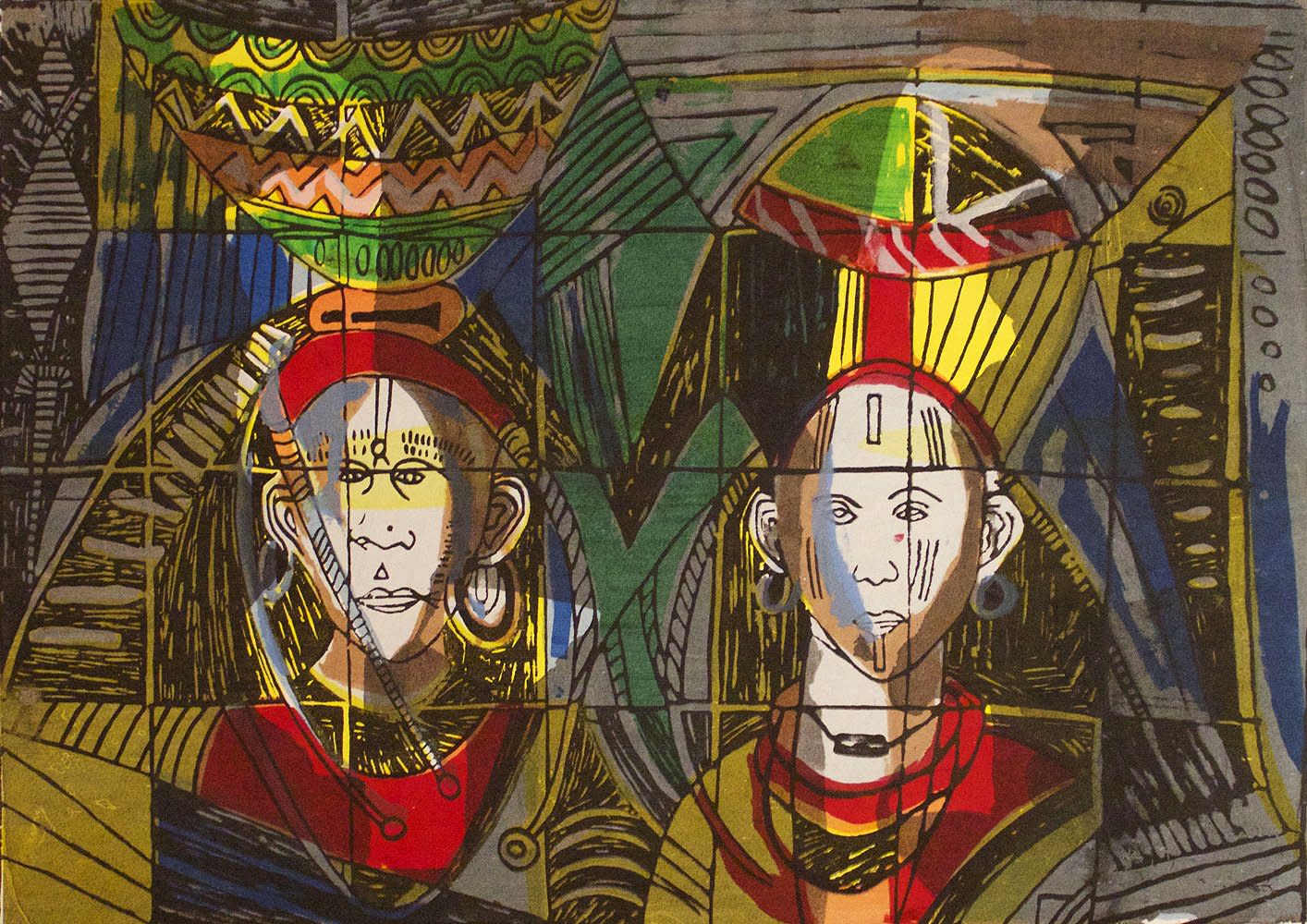Eighty-seven-year-old Nigerian artist Bruce Onobrakpeya has maintained a thriving studio practice for sixty years. He has produced sculptures, installations, and paintings, but it is his arresting and colorful prints that have made him a legend of African art. In the Nigerian newspaper The Guardian, Tajudeen Sowole profiles Onobrakpeya on the occasion of his career-spanning exhibition entitled “Eni! You Can Always Tell Where the Elephant Has Passed By,” currently on view at the Wheatbaker Hotel in Lagos, Nigeria. Sowole details the native tribal mythology and philosophy that influences Onobrakpeya work, and also explores how the challenges faced by young Nigeria artists differ from those faced by Onobrakpeya’s generation. Here’s an excerpt from the article:
Artists of Onobrakpeya’s generation of Nigerian modernists fete their art in proudly African identity. But in contemporary behaviourial patterns of most artists, the African identity is being misunderstood as a disadvantage to compete on global space. “There is no need to deny African art,” Onobrakpeya argued and suggested: “You can call it post-Africanism if you like.”
While the visual and literary works of creative professionals like Onobrakpeya, Uche Okeke, Ben Enwonwu, Yusuf Grillo, Wole Soyinka, Chinua Achebe and others reflect the pre and post independence challenges of Nigeria’s political space, contemporary artists appear not as loud on the current issues confronting the Nigerian nation. Perhaps, the challenge and approach of the today’s visual and literary professionals differs, Onobrakpeya said.
He recalled how the visual artists then, for example, “used the nationalism spirit and independent struggle,” to enrich its art contents. “We (Zaria Art Society) also look back then at things that we thought was good from our native environment and not just about foreign all the time.”
He, however, insisted, “the artists today are not exactly out of touch,” noting, “every generation has its contents,” and perhaps, the nationalism “spirit is still continuing till date.”
Image: Bruce Onobrakpeya, Three Faces II: A Revisit of the Sunshine Period (1960-70), serigraph print on paper. Via the Gallery of African Art.
